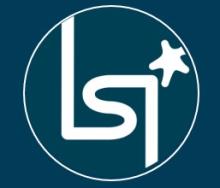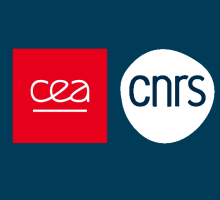Séminaire Invité d'Aurélien Manchon
Lundi 2 mai - 10H30 - salle LLR - 5-2021 (accueil café 10H)
Chiral objects are ubiquitous in science and pose fundamental challenges, such as the importance of chiral molecules in commercial drugs or the dominance of matter over antimatter in the universe. Magnetic materials lacking inversion symmetry, called chiral magnets, constitute a unique platform for the exploration and control of chiral objects. In these systems, typically comprising multilayers of transition metal ferromagnets and heavy metals (W, Pt, Ta etc.), interfacial spin-orbit coupling adopts a peculiar form under inversion symmetry breaking [1]. This enables a wealth of physical phenomena, among which the emergence of magnetic skyrmions [2] – topological magnetic textures –, and spin-orbit torques [3] – an efficient means to electrically control magnetization dynamics. This seminar aims at presenting various (theoretical and experimental) aspects of the interplay between spin transport and magnetization dynamics mediated by spin-orbit coupling in chiral magnets. I will first discuss the nature of interfacial spin-orbit coupling in magnetic multilayers and examine how it facilitates the onset of chiral magnetic textures [4]. I will then review the non-equilibrium properties of such multilayers, focusing on the electrical generation of magnetic torques, called spin-orbit torques, that allow the efficient manipulation of magnetic textures [3], including antiferromagnetic order parameter [5]. Finally, the novel concept of chiral damping, i.e. the idea that energy dissipation depends on the chirality, will be introduced [6]. In conclusion, extension towards alternative materials such as oxide heterostructures, topological insulators and transition metal dichalcogenides will be considered [7].
Figure 1: Ferromagnet/Heavy Metal bilayers display of wealth of spectacular phenomena, such as the electrical generation of spin-orbit torques, the onset of chiral magnetic textures and the emergence of chiral magnetic damping.
[1] A. Manchon et al., Nature Materials 14, 871 (2015).
[2] see e.g. N. Nagaosa and Y. Tokura, Nature Nanotechnology 8, 899 (2013).
[3] A. Manchon and S. Zhang, Phys. Rev. B 78, 212405 (2008); X. Wang and A. Manchon, Phys. Rev. Lett. 108, 117201 (2012); Li et al., Phys. Rev. B 91, 134402 (2015).
[4] A. Belabbes, G. Bihlmayer, S. Blügel, and A. Manchon, arXiv:1511.01614.
[5] J. Zelezny et al., Phys. Rev. Lett. 113, 157201 (2014).
[6] E. Jue et al., Nature Materials (2015); C. Akosa, M. Miron, G. Gaudin and A. Manchon, arXiv:1507.07762 (2015).
[7] A. Mellnik et al., Nature 511, 449 (2014); H. Li, X. Wang, and A. Manchon, Phys. Rev. B 93, 035417 (2016); P. B. Ndiaye et al., arXiv:1509.06929.


